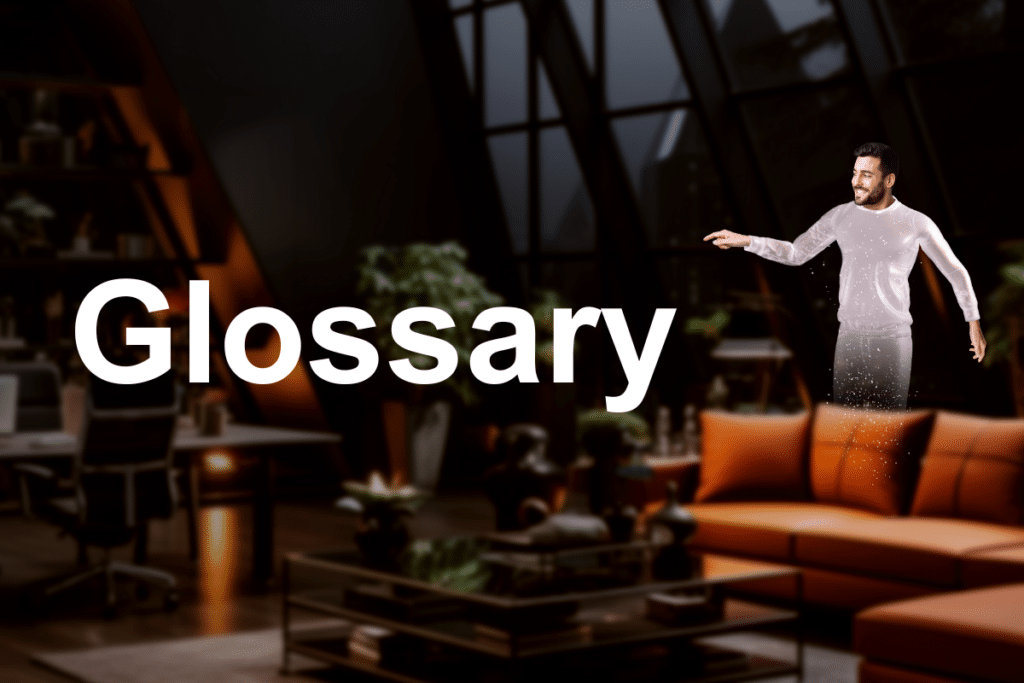Human AI Interaction

What Is Human AI Interaction?
Human AI Interaction refers to how people engage, communicate, and collaborate with artificial intelligence systems. It’s the design space where humans and machines meet through interfaces, voice, visuals, behavior, and decision-making frameworks. This interaction is not just about giving commands to machines, but about creating a partnership in which humans and AI support, enhance, and respond to one another.
Whether it’s an AI assistant answering questions, a visual avatar guiding a training session, or a recommender system shaping content, Human AI Interaction is about building intuitive systems that align with how people think, feel, and work. As AI systems take on more roles in our daily and professional lives, from healthcare to customer service, the quality of these interactions is becoming central to user trust, safety, and effectiveness.
The Evolution of Human AI Interaction
In the early days of computing, interaction with machines was entirely one-sided. Humans issued commands using code, and machines responded in rigid, predefined ways. The rise of graphical interfaces in the 1980s and 90s marked a leap forward, but the real transformation came with the introduction of AI-powered systems that could understand context, learn from behavior, and generate natural language.
Today, Human AI Interaction has become a core focus of research and development across disciplines. Thanks to advances in machine learning and computer vision, AI systems can now interpret voice, emotion, intent, and gesture. We’ve gone from typing into boxes to having conversations with digital assistants, from clicking through forms to watching virtual humans deliver personalized content.
D-ID’s work in conversational AI assistants and AI companionship represents a new stage in this evolution. These agents aren’t just functional tools, they’re designed to feel more human, empathetic, and responsive, creating a stronger sense of connection and trust.
Core Components of Human AI Interaction
Human AI Interaction is made possible by a set of interwoven technologies and design principles that help AI systems interpret and respond to human input in natural, meaningful ways.
1. Natural Language Processing (NLP)
NLP enables machines to understand and generate human language. It allows users to interact with AI through voice or text, without needing to learn a system’s commands. NLP is foundational to chatbots, voice assistants, and other conversational AI tools.
2. Multimodal Interfaces
Modern interfaces often combine text, speech, visual elements, and even facial expressions to create more holistic communication. D-ID’s virtual humans exemplify this: they deliver spoken content using lifelike avatars that make eye contact, gesture, and reflect emotion, making the interaction more intuitive and relatable.
3. Personalization and Context Awareness
AI systems that adapt to user preferences, historical behavior, and situational context deliver more relevant and helpful experiences. This personalization builds trust and makes the system feel more attuned to the user’s needs.
4. Feedback Loops and Learning
Effective Human AI Interfaces evolve over time. They use feedback loops to refine their responses and tailor their behavior to individual users. Whether through implicit signals (like engagement time) or explicit feedback (like ratings), the ability to learn and improve is critical.
5. Ethical Design and Transparency
As AI systems grow more powerful, they must be designed transparently. Users should know when they’re interacting with an AI and understand what data is being collected or acted upon. Ethical design ensures the interaction is respectful, trustworthy, and aligned with human values.
Applications of Human AI Interaction Across Industries
Human AI Interaction plays a vital role in many sectors, enhancing workflows, enabling accessibility, and transforming how services are delivered.
Healthcare
AI supports medical decision-making, monitors patient health, and even provides mental health support. Human-centric design is essential here, as empathy, trust, and clarity are critical. Virtual health assistants and AI avatars, like those developed using D-ID’s Studio, can explain diagnoses, remind patients to take medications, or provide emotional support with a comforting, human-like presence.
Education and Training
Human AI Interaction is revolutionizing education by making learning more engaging and adaptive. AI tutors can respond to students’ pace and style, provide real-time feedback, and present lessons using visual agents. For example, D-ID’s talking avatars can be used in training modules to simulate instructors or virtual patients, creating more realistic and relatable learning environments.
Customer Service and Support
Conversational AI has made huge strides in customer support. With the right interface, users can troubleshoot problems, get product recommendations, or even resolve billing issues without waiting for a human agent. Human-assisted AI improves this further by ensuring a seamless transition when escalation is needed. By blending automation with empathy, these systems enhance satisfaction while reducing costs.
Creative Industries
Writers, designers, and marketers increasingly collaborate with AI tools that suggest, generate, or refine content. But the interaction is only effective if the AI understands the creator’s intent. This co-creative process depends on intuitive interfaces and well-designed feedback loops. Human-AI collaboration allows teams to scale content production without sacrificing originality.
Accessibility and Inclusion
For individuals with visual, auditory, or cognitive impairments, AI can act as a translator, guide, or aid. Voice-controlled systems, avatar interpreters, and adaptive interfaces make technology more accessible. This is one of the most important areas of Human AI Interaction: not just making systems usable, but usable by everyone.
Future Outlook: Designing Human-Centric AI Experiences
Human AI Interaction is no longer about simple inputs and outputs. It’s about building meaningful, productive, and human-centered relationships between people and intelligent systems. As AI becomes more integrated into how we work, learn, and live, the quality of that interaction will shape everything from brand perception to learning outcomes to health care delivery.
With visual and conversational agents like those created in D-ID’s Studio, we’re entering a new era where AI not only understands us, but speaks to us in our own language, gestures with empathy, and becomes a real partner in our digital lives.
Getting Started
Creating an AI-generated persona as a virtual representative takes only a few minutes and no special skills. Find out how this process can work wonders for you by contacting us today.
Was this post useful?
Thank you for your feedback!


